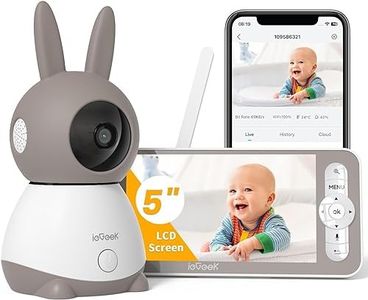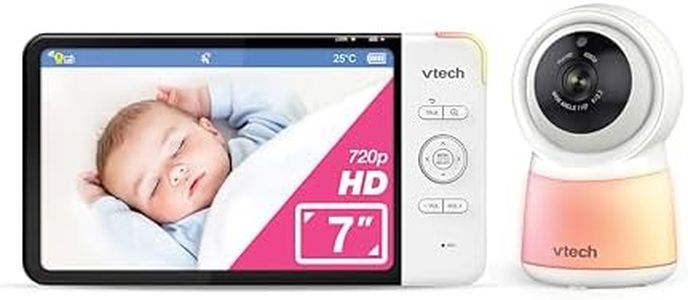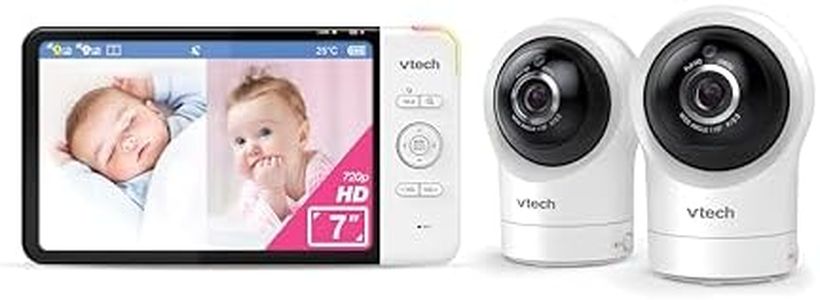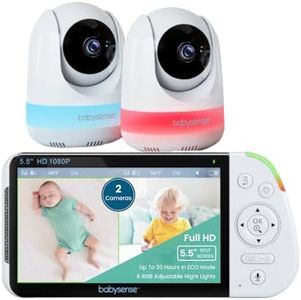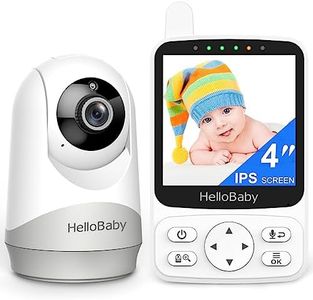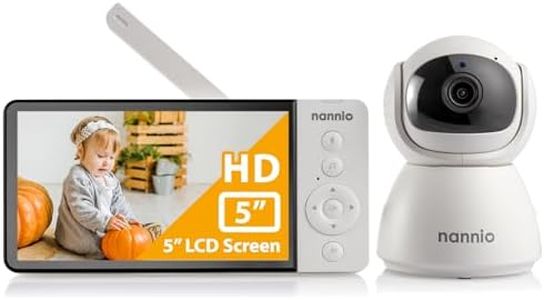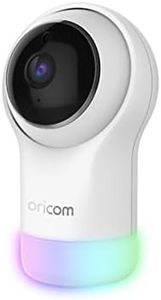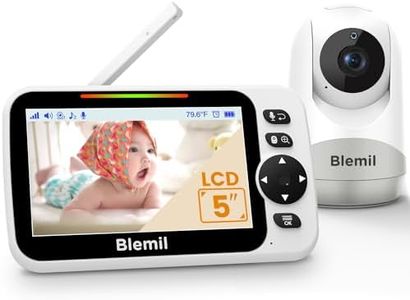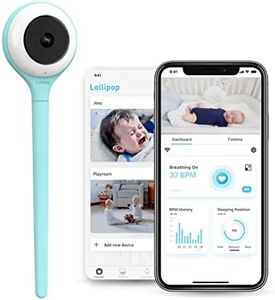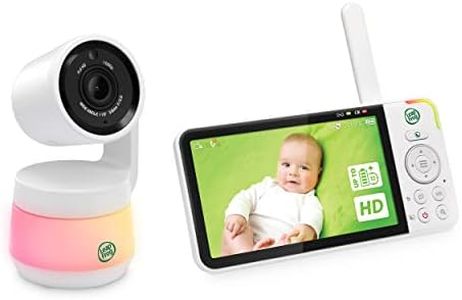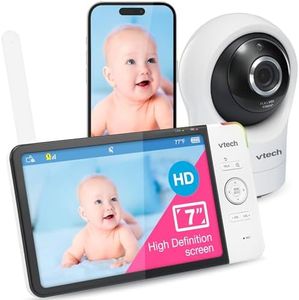We Use CookiesWe use cookies to enhance the security, performance,
functionality and for analytical and promotional activities. By continuing to browse this site you
are agreeing to our privacy policy
10 Best Wifi Baby Monitor With Handheld
From leading brands and best sellers available on the web.Buying Guide for the Best Wifi Baby Monitor With Handheld
Choosing a WiFi baby monitor with a handheld unit is all about balancing your desire for flexibility and security. These monitors allow you to watch and listen to your baby from a dedicated handheld screen, while also sometimes offering the option to check in remotely via your smartphone. The best fit depends on your home size, how often you want to monitor remotely, and features that make you feel confident your baby is safe.Video QualityVideo quality refers to the clarity and detail of the picture you see on the handheld screen and, if available, your phone. This is important because a sharper video makes it easier to see what your baby is doing, especially at night or in a dim room. Video quality usually ranges from basic (240p or 480p), to standard (720p HD), to high definition (1080p). If you just want basic monitoring, even lower resolutions can work, but if you prefer to see clear facial details or use the monitor in a big nursery, higher resolutions are worth considering.
RangeRange is how far the handheld unit can be from the baby monitor camera and still maintain a reliable signal. This is crucial for larger homes or if you want to move freely between floors or rooms. Some monitors work reliably only within a single floor or a limited distance (like 500 feet), while others offer extended range (up to 1,000 feet or more). Consider your home’s size and how far you’ll wander; if you have thick walls or multiple stories, a longer range is safer.
WiFi ConnectivityWiFi connectivity lets you check the baby monitor remotely via your phone or tablet, in addition to the handheld unit. This is useful for monitoring your baby while outside the house, but it also raises security concerns as anything on WiFi could be hacked if not properly protected. If you’re tech-savvy or work away from home, WiFi can be quite useful, but for peace of mind, some parents stick with handheld-only use for complete privacy.
Battery LifeBattery life measures how long the handheld parent unit (and sometimes the camera) can run before needing to be recharged. Longer battery life means fewer interruptions and more reliable monitoring overnight or during naps. Shorter battery life will require you to charge more often, which can be inconvenient. If you’re moving around a lot during the day or want overnight monitoring, choose a monitor with extended battery life.
Pan, Tilt, and Zoom FunctionsPan, tilt, and zoom features allow you to adjust the camera remotely to get a better view of your baby or the whole room. This is great if your baby moves around a lot or you want to monitor multiple areas. Some monitors offer basic fixed positions, while others can sweep across the room or zoom in for close-ups. If you like to adjust the view without entering the nursery, search for these flexible features.
Audio Quality and SensitivityAudio quality refers to how clearly you can hear your baby, while sensitivity is how easily the monitor picks up quiet sounds. Good audio matters for hearing cries or noises even if you’re not checking the screen. Some monitors let you adjust the sensitivity to avoid picking up every little sound, while others are set at one level. If you’re a light sleeper or want to hear every coo, choose a high-sensitivity setting; if you prefer alerts for louder noises only, lower sensitivity may be better.
Night VisionNight vision ensures you can see your baby clearly even in a dark room. Infrared LEDs in the camera provide an image without disturbing the baby’s sleep. Some cameras offer better night vision range and sharper clarity than others. If you plan to monitor mostly at night, focus on models known for high-quality night vision.
Multi-Camera SupportSome monitors allow you to connect multiple cameras to a single handheld unit. This feature is handy if you have more than one child, want to watch over several rooms, or need different camera angles in one room. If your family is growing or your home has several sleeping areas, multi-camera support provides more flexibility.
